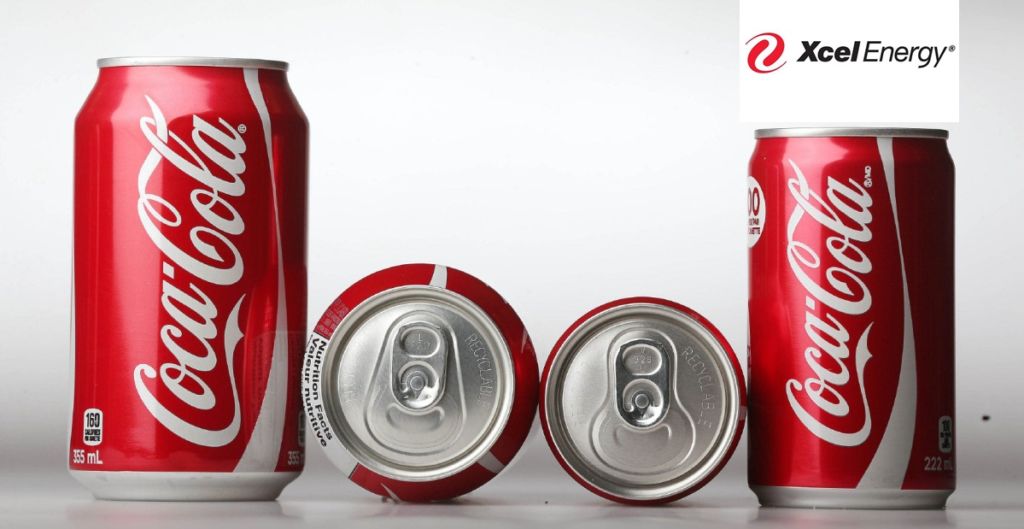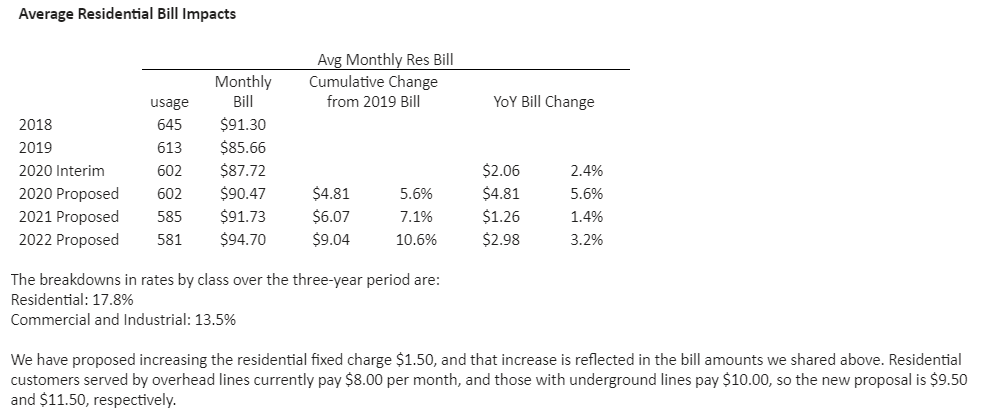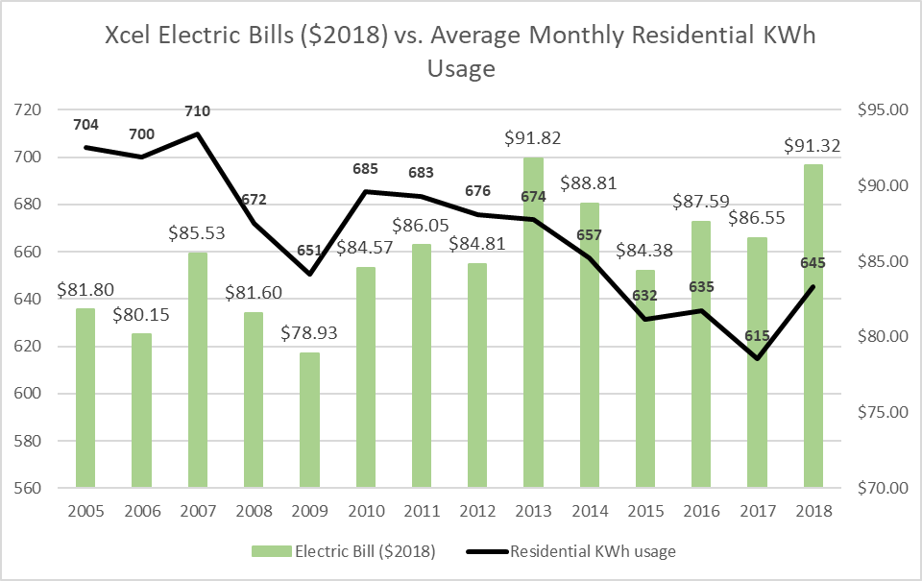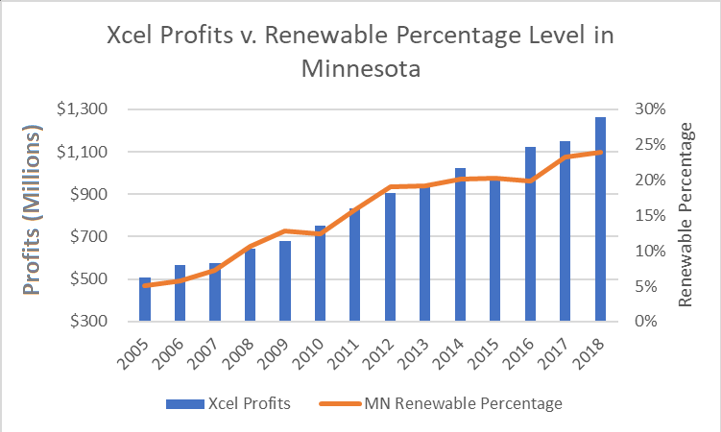Three Things Xcel Energy Doesn’t Want You to Know About Their Massive Increase in Electricity Prices
Xcel Energy recently announced its intention to impose a massive 15.2 percent increase in electricity prices in Minnesota over the course of three years to pay for a $466 million spending spree that will pay for wind turbines, transmission lines, distribution system and nuclear plant upgrades, higher corporate profits, and erase customer savings from energy efficiency. However, the 15.3 percent is just an average. In fact, the government-approved monopoly utility is seeking to raise residential electricity rates by 17.75 percent, representing a massive increase in electricity costs for Minnesota families.
Here are three things Xcel Energy doesn’t want you to know about their massive hike on electricity prices.
- After the price increase, Xcel residential customers will pay 29 percent more for their electricity than the national average, resulting in an additional yearly cost of almost $200.
- This will cause electricity bills to reach new record highs.
- This is only the tip of the iceberg. More rate increases are coming, and they could increase electricity bills by $580 per year.
Residential Electricity Prices Will Be 29 Percent Higher than the National Average
Have you ever noticed that sometimes items at the grocery store start to come in smaller packages, but the prices remain the same? This is similar to what Xcel Energy is doing when they boast about how electric bills for their customers were 22 percent below the national average in 2018.
While this claim is technically true, what Xcel doesn’t tell you is that bills were only 22 percent below the national average because their customers used 29 percent less electricity, relative to the national average in 2018, according federal data. You can see these difference in the table I have produced below.


No one in their right mind would brag to their neighbor that they spent 22 percent less on a container of coffee if the container was nearly 30 percent smaller than the one your neighbor bought at the store, but this is what Xcel Energy effectively does all the time in their TV and radio commercials.

In my opinion, this bait-and-switch is most likely employed to make their Minnesota customers feel like they are getting a deal on their electricity (so they can keep raising prices), when in reality they pay 10 percent more, per kilowatt hour, than the national average. This difference will grow significantly if Xcel is able to raise their residential rates by 17.75 percent.
The table below compares residential electricity prices for Xcel Energy after the rate increase with the national average. The table uses Xcel’s 2018 rates as a base year, and assumes electricity consumption will remain at 2018 levels. As you can see, this rate increase will cause electricity prices to be nearly 30 percent higher than the national average and cause bills to increase by about $200 annually.

Electricity Bills Will Continue to Set New Record Highs
Xcel has tried to say this will “only” increase customer costs by $110 per year, but as we have already shown, deeper look at the proposal shows the actual cost increases will be nearly $200 per household per year. So how can Xcel claim the annual costs will be 76 percent lower than what we’ve calculated?
I obtained the table below through emails with Xcel. The table shows average monthly bills increasing from $85.66 in 2019 to $94.70 in 2022, resulting in an increase of $9.04 per month. Multiplying this by 12 gives us the $110 per year increase that has been widely reported in the newspapers.

The problem with this reporting, however, is that it does not take into account the fact that Xcel is hiding the actual household cost increase by assuming electricity usage falls by about 10 percent during this time. If household electricity use remains constant, Xcel customers will pay nearly $200 more per year by 2022, resulting in record high electricity bills.
The graph below shows average monthly electric bills in 2018 for Xcel’s residential customers were the second-highest on record (the failure at Sherco 3 caused 2013 to be the highest year on record). Electric bills have increased by 11.6 percent even though electricity consumption fell by 8.3 percent. If electricity consumption had remained constant during this time, we would expect average monthly bills to be $99.67, or nearly 22 percent higher than they were back in 2005, the first year Xcel was required to purchase renewable energy.

Xcel’s proposed rate increase guarantees that electric bills for families in their service territories will reach new all-time highs in the coming years, and energy efficiency efforts will be unable to save customers money because Xcel will simply raise electricity prices again.
In fact, this phenomenon is why Xcel is asking for an additional $135 million in this rate case. According to the rate case filing:
“Q. HOW DOES THE STAGNANT OR DECLINING SALES ENVIRONMENT IMPACT THIS RATE FILING?
A. Similar to our past two rate cases, declining sales necessarily mean that we must recover our investment over fewer units of sales, leading to a portion of our rate increase request.”
We’ve seen that Xcel’s proposed rate hike will increase electric bills by almost $200 per year, but unfortunately this is only the tip of the iceberg. More cost increases are coming soon, and they will make this rate increase seem small in comparison.
The Tip of the Iceberg: Much Larger Rate Hikes to Follow
Xcel argues the current massive increase in prices is needed because the company plans to spend $466 million over the course of three years to build new wind facilities, transmission lines to transport wind energy from distant wind facilities to the Twin Cities, increase Xcel’s guaranteed profits, and upgrades to their distribution system and nuclear power plants.
But what isn’t being talked about is the fact that Xcel’s current rate case does not include nearly $1 billion in new spending on new wind facilities by 2021. These facilities include the Crowned Ridge, Blazing Star II, Freeborn, 4 Mower, Jeffers, Community Wind North, and the Dakota Range wind projects. Many of these wind facilities will be in the Dakotas and will presumably require large investments in transmission infrastructure.
Even if we assume these new wind facilities will require zero transmission expenditures, $1 billion for wind projects is more than twice as large as the expenses included in the current rate increase.
If we assume the next residential rate increase is twice as large as this one, and use 2018 as a base year, we could see residential electricity prices increase by 53 percent between 2018 and 2025, assuming Xcel spreads the cost over three years, like they did in this rate case. If these assumptions prove accurate, the table below shows Xcel Energy customers could be paying an additional $580 per year, without accounting for federal subsidies for wind.

Renewable advocates will likely cry foul at this analysis for excluding the effect of the wind Production Tax Credit (PTC), but excluding the subsidies makes sense two reasons: 1) Subsidizing a product doesn’t change its price, it merely changes how it is paid for. Rather than seeing the entire price increase in their electric bill, Minnesota families will bear the costs in the form of higher taxes (or higher deficits). 2) The costs of building wind are front-loaded in electricity rate increases, with ratepayers expected to foot the bill of the upfront construction costs for the promise of lower costs in the future.
While state mandates were the driving force for renewable energy installation at first, Xcel has been on track to meet their 30 percent renewable energy mandate for some time. Now, it is Xcel’s own rent-seeking that is driving the rush to renewables. It is the pursuit of increasing their corporate profits by building unnecessary wind and solar facilities that is driving the company’s desire to prematurely shut down their coal fired power plants before the end of their useful lifetimes and generate 60 percent of their electricity from wind and solar by 2030.

Xcel’s current rate increase constitutes a major cost increase on Minnesota families, but unfortunately, this will feel downright affordable compared with what is to come in the very near future.